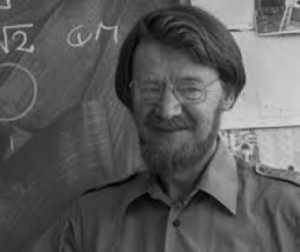Eternal Sunglasses
Ireland’s not famous for its scientists. The Emerald Isle has more of a reputation for writers and singers: James Joyce, Jonathon Swift, and cough-cough, Dublin’s favourite son and man of the eternal sunglasses, Bono. Creatively, the Irish have always pulled way above their weight considering the population of the country.
But in science, the landscape is rather more barren.
Okay, there’s Robert Boyle, regarded as the world’s first modern chemist, as well as Nobel laureate Ernest Walton, famous for his atom-smashing experiments.

Not bad, you may say, considering, but the ratio of creative artists to those more scientifically minded is heavily weighted in the former’s camp.
Apart from Walton, only biologist William C. Campbell can be credited as being born in the Irish Republic and to have won a Nobel prize.
Shame, really.
At least for the Irish.
Though, there is another genius hovering in the borderlands, a physicist of such talent, with such a mind, that he was responsible — consciously or unconsciously — of constructing the basis of a scientific discipline that was to change the world.
Northern Irish physicist John Stewart Bell.
You may or may not have heard of him.
Enter The Hero
If you’re reading this, your interest in quantum physics might be more than the average layman’s, and Bell will be a familiar name to you. If not, well, I feel privileged to be the one conveying his wisdom here.
So here goes:
Without a doubt, in the opinion of almost all professional physicists out there, he was one of the greatest minds of the 20th century.
A man who knew his subject par excellence, a wizard of the subatomic world.
Born into a poor family in Northern Ireland, he decided as a young man he wanted to become a scientist. His family, unable to afford the cost of his education, sent him to a technical school to learn. Cutting a long story short, he made a go of it, finally getting a place in higher education by studying for two degrees at Queen’s University, Belfast, before gaining a Ph.D. in physics from the University of Birmingham (my hometown university). Then he went to the United States to conduct research, before finally settling in Geneva, Switzerland, where he gained employment at the European Organization for Nuclear Research, otherwise known as CERN.

So far, so good.
Until we come to the crux: his Bell theorem, the theorem that basically proved Albert Einstein’s view on quantum mechanics was fundamentally incorrect.
It doesn’t get much better than this:
Bell’s Theorem
The theorem, formulated in 1964, is, in essence, a response, a refutation — if you will — to the Einstein Podolsky Rosen Paradox, (the EPR Paradox). I will do Bell’s theory nor the EPR paradox any justice by explaining it here.
What I can do, however, is to tie in how Bell’s thoughts have helped the development of quantum computing, which although there is no direct correlation, he did influence somewhat in an unknowing way.
The basic premise as to why quantum computers are better than classical models lies in the fact that they are capable, by way of their components, of accurately processing information that is quantized. To do it, new protocols — alien to classical computer models — must be implemented in order to establish and guarantee the components are appropriate for quantum computations to be carried out.
Stay with me, please.
The protocols on show have to be able to run independently of any devices, showing operational self-sufficiency, i.e. depend on a specific physical description via implementation. Once this has been established, Bell’s theorem can prove quantum states can be produced and measured reliably; or, in the words of American physicist David Bohm:
‘We conclude then that no theory of mechanically determined hidden variables can lead to all the results of the quantum theory. Such a mathematical theory might conceivably be so ingeniously framed that it would agree with quantum theory for a wide range of predicted results.’
That’s better, isn’t it, it’s clearer, more succinct and altogether on point.
Thanks, Dave.
And Bell’s legacy went further: in the Bell states, a theory of quantum information science that one of my esteemed colleagues at The Quantum Daily, more qualified to go into detail on, should write about in the future if they feel obliged to.
In a word, Bell’s ideas have advanced the knowledge of how quantum information can possibly be transferred through quantum logic gates in the form of qubits.
This genius’ legacy, then — by way of implication through his thoughts on quantum theory and quantum computing — has been and will be forever special.
And on that point, he deserves to be counted as a Quantum Godfather.
That is enough.
















